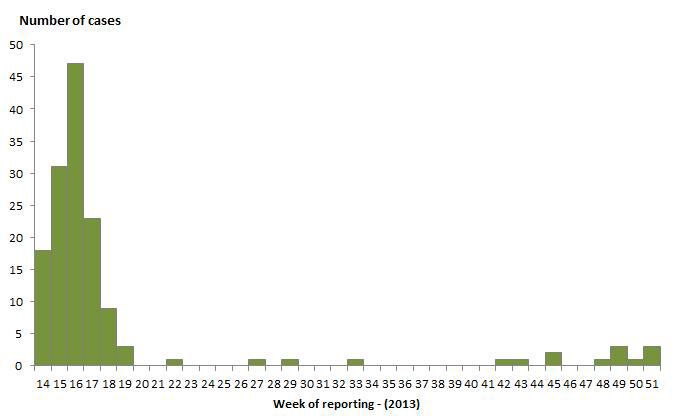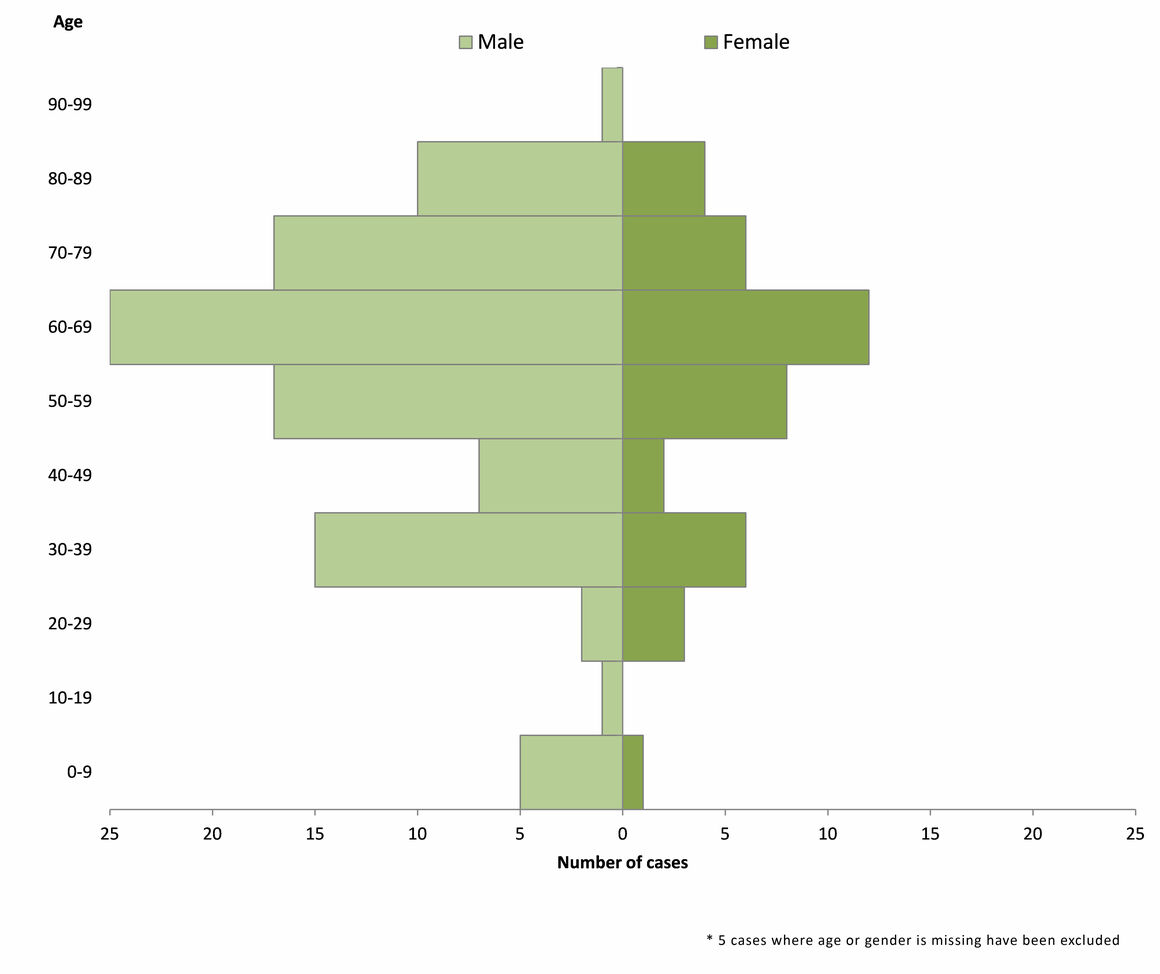Epidemiological update: A(H7N9) influenza virus, China, 19 December 2013
In March 2013, Chinese authorities announced the identification of a novel reassortant A(H7N9) avian influenza virus in patients in eastern China.
In March 2013, Chinese authorities announced the identification of a novel reassortant A(H7N9) avian influenza virus in patients in eastern China. Since then, human cases have continued to be reported and, as of 19 December 2013, there have been 147 laboratory-confirmed cases from: Zhejiang (51 cases), Shanghai (34), Jiangsu (27), Fujian (5), Guangdong (6), Jiangxi (5), Henan (4), Anhui (4), Hunan (3), Beijing (2), Shandong (2), Hong Kong (2), Hebei (1) and Taiwan (1).
Figure 1: Distribution of cumulative number of confirmed cases of avian influenza A(H7N9), March – 19 December 2013
Since October 2013, twelve new cases have been reported, ten cases have occurred in two previously affected provinces (Zhejiang and Guangdong) and two cases have been reported in Hong Kong.

Figure 2: Distribution of confirmed cases of avian influenza A(H7N9), by date of reporting, week 14 to 51, 2013 (as of 19 December 2013, n=147)
Most cases have developed severe respiratory disease. Forty-seven patients have died (case-fatality ratio=32%). The average age is 60 years, ranging from 3 to 91 years; 98 of 147 patients are male, and gender is unknown in five cases.

Figure 3: Distribution of confirmed cases of avian influenza A(H7N9), by age and gender, March to 19 December 2013 (n=142*)
A few small clusters have been detected but almost all cases have occurred sporadically, without obvious epidemiological links. While occasional human-to-human transmission in the clusters cannot be ruled out, there is no confirmed sustained human-to-human transmission. While most cases have developed severe disease, a few mild cases have been detected.
Most human A(H7N9) cases have reported contact with poultry or live bird markets. The most plausible underlying scenario is of a zoonotic avian influenza that has spread or is spreading in poultry in parts of eastern China. It is a severe threat to humans because of its lethal effect in 32% of human cases and genetic features that have human pandemic potential.
ECDC continues to monitor information on avian influenza A(H7N9). The assessment provided in the ECDC rapid risk assessment (RRA) of 8 May 2013 remains valid.
EU citizens living or working in China are strongly advised to avoid live-bird markets. A likely scenario involves travellers who get infected in China and import the disease to Europe. Public health authorities should be prepared for the importation of the disease. However, the occurrence of imported cases would not change ECDC’s risk assessment.
ECDC’s view is that if this virus persists in poultry, it will represent a significant long-term threat, either as a zoonosis or perhaps a pandemic virus. Both eventualities should be prepared for.




